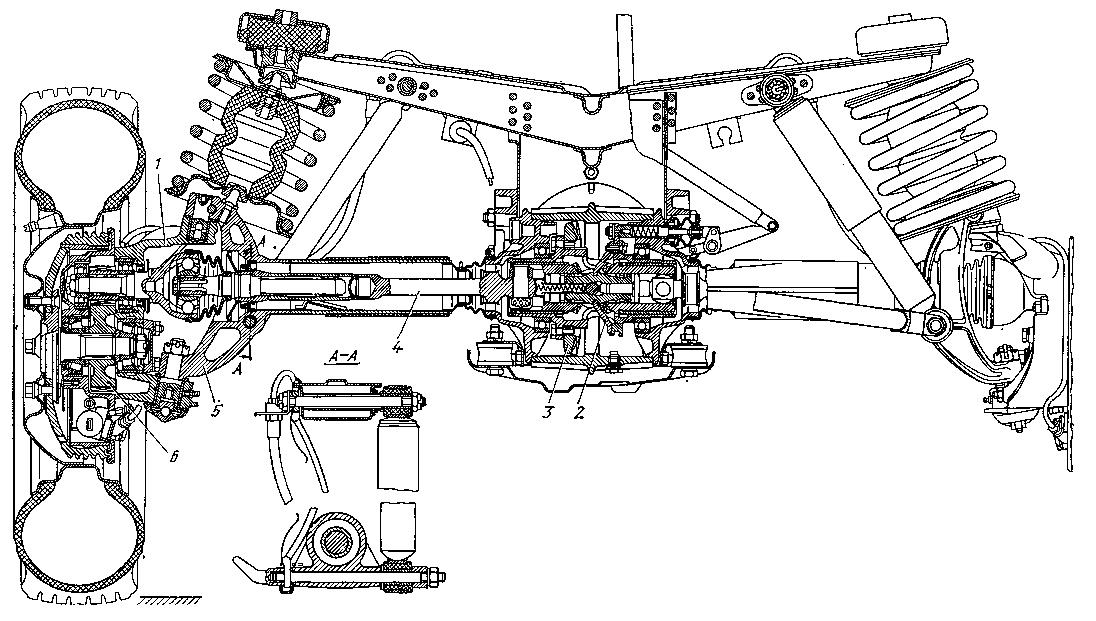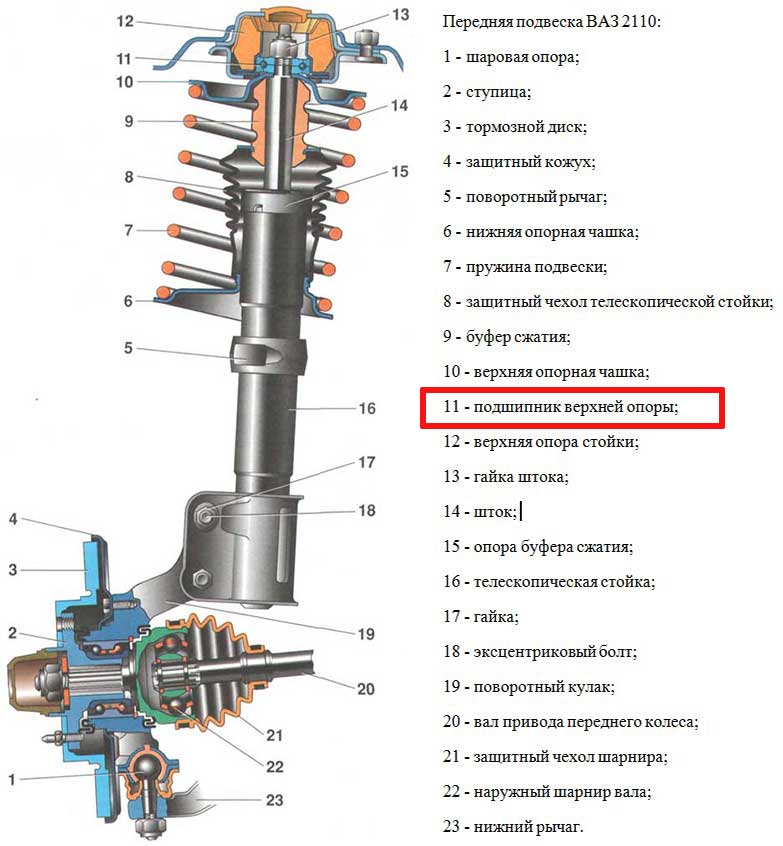
The main functions and characteristics of the front suspension of the car
Content
For greater driving safety, automakers overwhelmingly choose independent suspension schemes for the front axle.
The road is never perfectly smooth: pits, cracks, bumps, potholes are constant companions of motorists. The slightest unevenness would respond to riders, if there were no front suspension of the car. Along with the rear damping system, the design works to level road obstacles. Consider the features of the mechanism, functions, principle of operation.
What is the front suspension of a car
The wheels of the car are connected to the body through a flexible layer - the car suspension. A complex and harmonious set of components and parts physically connects the unsprung part and the sprung mass of the car.
But the mechanism also performs other tasks:
- transfers to the body the vertical moments and forces arising from the contact of wheel propellers with the roadway;
- provides the necessary movement of the wheels relative to the supporting base of the machine;
- responsible for the safety of those traveling in vehicles;
- creates a smooth ride and ease of movement.
Speed is an important condition, but moving in comfort is another basic requirement for travelers to have a vehicle. The problem of a soft ride was solved even in horse-drawn carriages, by placing pillows under the passenger seats. Such a primitive suspension system in modern passenger cars has been transformed into various types of car front suspensions.

What is the front suspension of a car
Where is
The complex of components is part of the chassis. The device connects the front pair of tires with the power structure of the car, regardless of the drive. The mechanism is attached by movable connections with the front wheels and the body (or frame).
What it consists of
Suspension parts in any equipment scheme are divided into the following groups according to their functionality:
- elastic elements. This includes springs and springs, air springs and torsion bars, as well as rubber dampers, hydropneumatic devices. The tasks of the parts: to dampen impacts on the body, limit vertical accelerations, maintain the integrity of the rigid mounts of the auto suspension.
- Guiding mechanisms. These are longitudinal, transverse, double and other levers, as well as jet rods, which determine the direction of movement of the slopes along the track.
- Extinguishing auto components. Coiled springs would rock the car up and down for a long time, but the shock absorber dampens the vibration amplitude.
Suspended units have a large gradation. But the main division goes according to the device of the guide mechanisms into three classes:
- dependent suspension. A pair of front wheels is rigidly connected to each other by one axle. When the car gets into the pit with one wheel, the angle of inclination of both slopes relative to the horizontal plane changes. What is transmitted to passengers: they are thrown from side to side. This is sometimes observed on SUVs and trucks.
- independent mechanism. Each wheel of the car's front suspension copes with road bumps on its own. When hitting a cobblestone, the spring of one tire is compressed, the elastic element on the opposite side is stretched. And the bearing part of the car maintains a relatively flat position on the road.
- semi-independent device. A torsion beam is introduced into the design, which twists when it hits obstacles. From which the dependence of wheel propellers is reduced.
Electromagnetic adjustable, pneumatic and other suspension variations belong to one of these types of mechanisms.
How does work
The front suspension of the car keeps the tires in contact with the road and their position in space. It also directs and stabilizes the movement of the vehicle. During the ride, the whole complex of components and parts of the device is involved.
The operation of the suspension system of a front-wheel drive car (as well as rear-wheel drive) looks like this:
- The vehicle has hit an obstacle. A tire connected to other suspension components bounces up. In vertical movement, the wheel changes the position of rods, levers, fists.
- The acquired impact energy is fed to the shock absorber. A spring at rest is compressed after hitting a stone. And thus absorbs the energy transmitted from the chassis to the carrier part of the car.
- The compression of the spring triggers the displacement of the shock absorber rod. Vibrations are damped by rubber-metal bushings.
- After absorbing the shock, the spring, due to its physical properties, tends to its original position. Straightening, the part returns to its original position and the rest of the components of the suspension.
All existing types of structures for the front suspensions of a passenger car act similarly.
Construction diagram
For greater driving safety, automakers overwhelmingly choose independent suspension schemes for the front axle.
Most popular options:
- Double lever. The block of guide elements consists of two lever devices. In this design, the lateral movement of the wheels is limited: the car acquires better stability, and the rubber wears out less.
- Multi-link. This is a more thoughtful and reliable scheme, which is characterized by increased maneuverability and smoothness. Multi-links are used on cars of the middle and high price categories.
- McPherson. Technological, inexpensive, easy to repair and maintain, the "swinging candle" is suitable for front-wheel drive and rear-wheel drive cars. The shock absorber here is attached to the power frame by an elastic hinge. The part sways when the car is moving, hence the unofficial name of the suspension.
Diagram of McPherson's stand in the photo:

McPherson's stand diagram
